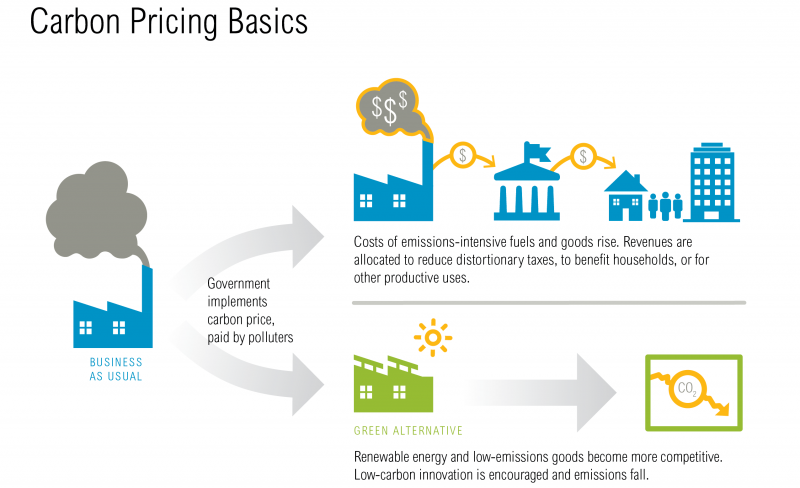
Residents of Saskatchewan and New Brunswick could receive carbon tax rebate directly if provinces fail to comply
The Federal Government has announced a regulatory framework for the carbon pricing system which is set to be enforced Jan. 1st, 2019, according to a Government of Canada press release.
Only provincial governments that voluntarily ask to use the federal carbon price system will guarantee they get the revenues to use how they see fit, Environment Minister Catherine McKenna’s office confirmed to The Canadian Press.
A draft released Monday says that any revenues raised from a carbon tax will either be returned to the government in the province where the money was raised, given directly to individuals or both.
“Provinces will not get away with trying to cut corners on carbon pricing. By Jan. 1, 2019, a province will not be able to avoid a price on carbon or rename a gas tax to call it a carbon tax. Carbon pricing will have to be implemented in addition to other climate policies for Canada to achieve its commitments under the Paris Agreement,” said Environmental Defence’s Keith Brooks.
The federal carbon pricing system has two elements:
- A charge on fossil fuels (e.g., gasoline, diesel, propane, natural gas), which would be paid by fuel producers or distributors.
- An output-based pricing system for industrial facilities with high levels of emissions.
The federal government would return all direct revenues from its carbon pricing system to the jurisdiction of origin.
“Provinces that try to dodge their full responsibility, as New Brunswick and Saskatchewan have recently proposed, will need to strengthen their carbon pricing approach or face the federal backstop,” warned Brooks.
Saskatchewan and New Brunswick are only provinces holding out on implementing carbon pricing. Saskatchewan has rejcted the idea of a carbon tax, with Premier Brad Wall saying he will take the Federal Government to court if need be. While Minister McKenna has already discounted New Brunswick’s plan to rebrand its existing gas tax as a carbon tax.
According to the government, the federal government’s output-based system – similar to the Alberta government’s Carbon Competitive Incentives program – creates a pricing incentive to reduce GHG emissions from industrial facilities while limiting impacts of carbon pricing on their international competitiveness and ability to compete with similar businesses in countries that don’t have carbon pricing.
The government claims this minimizes risk that businesses could move from Canada to jurisdictions that do not price carbon.
Industries in this system would not pay the charge on fuels they purchase, but on the amount of carbon they emit above a specified level of pollution.
The more a facility pollutes above its limit, the more it would pay. The more a facility reduces its emissions below its limit, the more it could earn by selling credits to other facilities that exceed their limits.
In 2018 and 2019, this carbon pricing system for large industrial facilities would apply to those facilities that emit 50 kilotonnes or more of carbon dioxide equivalent per year.
The standards developed for the federal output-based pricing system are not a minimum standard or benchmark for provincial or territorial systems, as they do not have to match Ottawa’s approach to carbon pricing in large industrial facilities.
The framework would be implemented in provinces or territories that choose the federal system or that do not implement a system that meets the federal standard.
The federal government would assess provincial and territorial carbon pricing systems as a whole against the pan-Canadian carbon pricing standard.
In most cases, the standards would be set as a percentage of the national average of a sector’s emissions per unit of production.
The government would start by developing output-based standards for the following industrial sectors: oil and gas, pulp and paper, chemicals, nitrogen fertilizers, lime, cement, base metal smelting and refining, potash, iron ore pelletizing, mining, iron and steel, and food processing.
In the future, the government may develop output-based standards for additional sectors. The government is considering how to apply carbon pricing to offshore oil and gas and to electricity generation.


Be the first to comment